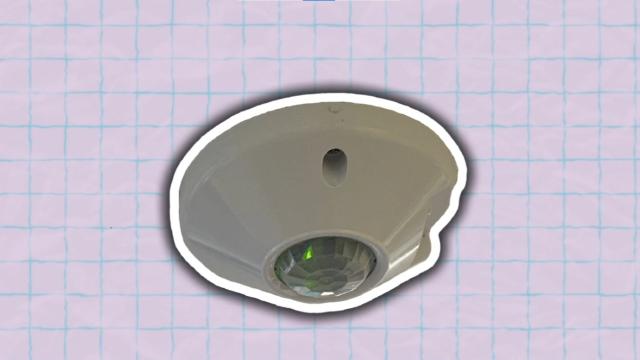As long as they are properly located, occupancy and vacancy sensors can improve productivity and safety as well as save money by automatically turning lights off when spaces are empty and turning them on when spaces are occupied.
Vents. Always choose locations at least six feet from air vents. In the case of ultrasonic sensors, be sure they are at least 12 feet apart to avoid interference.
Open areas. In open office areas or spaces such as warehouse aisles, ceiling-mount sensors are best. Be sure sensors are mounted close to walls with doors, so that someone entering the space is detected. But, be careful that the sensor area doesn't reach beyond the doorway, causing it to activate when people pass by.
Large spaces. Partition large spaces with multiple sensors with coverage that overlaps by about 20%. Be sure to cover the main walkways.
Private offices. When placing sensors in private offices, a wall-switch sensor works well, assuming there aren't obstacles that break the line of sight to the workspace. If there is no clear line of sight, a separate wall-mount sensor can ensure that the desk is in the motion area of the sensor.
Restrooms. For individual restrooms, a wall-mount sensor will normally work well. However, for a large public restroom, ceiling-mount sensors are better. Be sure that they encompass all entrances and open areas. To reach the inside of stalls, place the sensors directly over the separating panels. A longer timeout — 20 to 30 minutes — is recommended for passive infrared sensors. For taller stalls, use ultrasonic sensors.
Hallways. Wall-mount sensors located in the middle of the hallway usually work best. But if there's an elevator, a ceiling- mount sensor will yield better results.
Poorly placed sensors can lead to frustration and wasted energy. You can avoid both by following a few simple placement guidelines. Thinking about installing occupancy sensors at your facility? Don’t forget to check out the Commercial Lighting Incentive Program (CLIP).
September 2023 Water & Electric Key Accounts
From industry trends and best practices to sustainability initiatives, our monthly Connections Newsletter provides valuable insights, updates, and resources to support our large business customers.
Full Newsletter